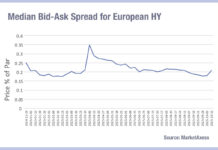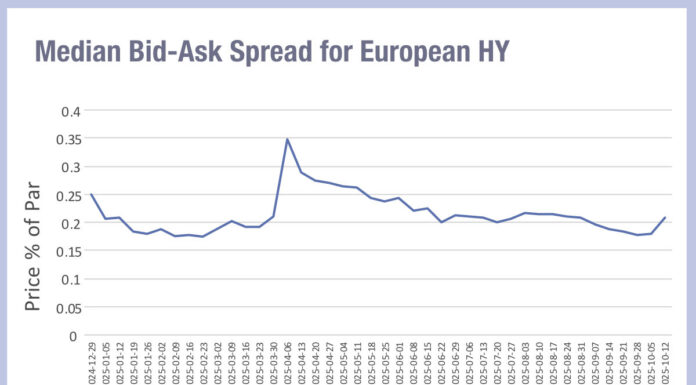Bond investing has become more exciting in the past two years than in the previous ten, with interest rates and central bank activity fire-fighting rising inflation, liquidity shortfalls and cash-strapped governments.
In corporate bond markets, increased short-term volatility and longer-term uncertainty over returns and risks are increasing the need for hedges – making derivatives instruments increasingly interesting to traders and portfolio managers.
While the migration away from single name credit default swaps (CDS) post-financial crisis has not reversed, other instruments, including credit default swap indexes (CDX), credit index futures and bond options are all coming into focus.
Exchange-traded derivatives like options and futures have the advantage that they offer a liquid access point to bond markets, just as bond exchange traded funds (ETFs) do, and by adding liquidity to the market through derivative trading support net liquidity in the wider bond markets.
They are more accessible than swaps trades for many funds because they do not require the International Swaps and Derivatives Association (ISDA) agreements that over the counter (OTC) derivatives need between counterparties and equally do not carry the weight of collateral needed to support margin calls for OTC derivatives.
Nevertheless, swaps can be tailored between counterparties to more exactly map across exposures needed than cookie cutter derivatives such as futures and options.
Understanding how these trade-offs can benefit a portfolio is key to developing the capability to trade derivatives within a fund, and education plays a big role.
The investment team needs both the portfolio management and trading skills to position themselves for using derivatives effectively with counterparties.
Assessing the costs of collateral, pre-trade, makes a desk far more effective at understanding the end-to-end trading costs of a swaps trade. Where that process is handled by the middle office, trading desks may struggle to integrate the information into their pre-trade processes.
Papering up with dealers is integral to full use of derivatives but the cost and work involved can only be justified If there is a clear economic advantage.
As bond investors increasingly turn to derivatives markets to support their cash bond market investments, a strategic perspective is needed to make the big calls to support this engagement. Traders should engage with market operators and liquidity providers in the bond space so they can assess the new instruments being launched in the market.
Big unknowns are set to continue in the debt space – getting hedged will only increase in importance.
©Markets Media Europe 2024
©Markets Media Europe 2025















